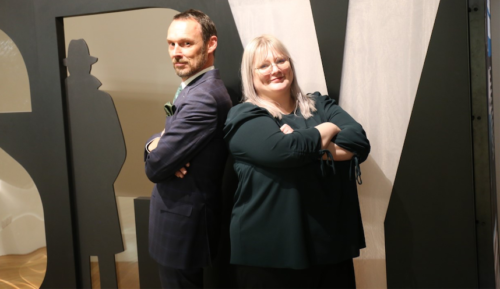
A new exhibition reveals a few top secrets of what it’s really like to be a spook, reports APRIL MARCH.
THE cloak-and-dagger exploits of fictional characters such as James Bond and Jason Bourne have shaped our cultural idea of spy work.
But these films have little to do with the reality of Australian intelligence.
A fascinating new exhibition is shedding some light on the real stories of Australia’s security agencies, told through photographs, gizmos and gadgets, intelligence memos and candid interviews with real-life spooks.
Developed in partnership with ASIO, the National Archives is delving into the world of spies to unveil the curious history of espionage in Australia.

“Spies have appeared in popular culture for decades, but we don’t know enough about our own country’s history of espionage,” said National Archives director-general David Fricker.
“We need to have a much better understanding of why we have security and intelligence services in Australia… so that we can stay at the forefront of international affairs, that we can be a sovereign nation and enjoy our prosperity and freedom.
“The exhibition has given us the opportunity to open up many of the unrevealed secrets of ASIO and ASIS and other intelligence agencies.”
Fricker spent a decade working for ASIO before he was appointed to the Archives in 2012.
“I’ve come from a job where my role was primarily to keep secrets, into a job where my role is to reveal secrets,” Fricker said.
“Most of the records we received at the archives were private, secret and withheld at the time they were created, so our job is to reveal those secrets.”
Secrets and stories such as the infamous Petrov defection and Skripov’s double agent, to lesser known events such as the Red Flag riots in Queensland and details about Australia’s first spy, Wilson Le Couteur.
Exhibition curator Emily Catt said the interactive exhibition – two years in the making – is designed to get visitors up close and personal with spy craft and spy equipment.
“We were able to borrow from ASIO real objects that were used by officers, like a book with a camera hidden inside, a tie with a hole cut out for a camera and microphone… things that have never been seen by the public before.”
There’s a defector’s kit from the Cold War era, a tobacco tin containing material for copying keys and a disguise kit used during covert surveillance.

But perhaps the most intriguing items, and never exhibited in Australia before, are two cryptographic machines used to break codes during World War II.
“Code breaking work was done by Australian women working in the Fleet Radio Unit in Melbourne,” said Fricker.
“These women were heavily engaged in code breaking… doing that hard work to break the codes that enabled Australia to win the most important battles of World War II.
“We were able to borrow two cryptographic machines from the National Cryptologic Museum in America… this lets you stand up close to the sort of machinery and the sort of computational power that was being used to break codes during World War II.”
Notably, the exhibition explores questions of what security means in a modern democracy. How much secrecy is enough? How do we keep our country safe without compromising the civil liberties upon which it was built? How do we identify the enemy, and can intelligence officials target the wrong people? Were the “Save Our Sons” mothers, jailed in Melbourne in the ’70s for handing out anti-conscription pamphlets, really a risk to national security?
“These are fascinating stories and they add so much to the depth of our understanding of what security means in a modern democracy like Australia,” said Fricker.
“With the advent of the internet and the idea that we are all under surveillance, Australians are wondering where does my privacy end and what do I have to give up as a citizen of Australia for our collective security?
“Espionage, national security… be it terrorism, be it politically motivated violence and, of course, foreign interference are all very much on the front pages of the papers in Australia now.”
As Australia’s intelligence and security agencies adapt to increasingly sophisticated threats from home and abroad, the exhibition provides a window into the work of those protecting our country.
“It’s a pretty intense and high-pressured job to work in security intelligence in Australia… it’s not martinis and fast cars; it’s a serious hard slog to protect Australia’s democracy from threats. It’s a serious business,” Fricker said.
“Spy: Espionage in Australia”, National Archives of Australia until April 27 before touring around the country. Admission is free.
Who can be trusted?
In a world of spin and confusion, there’s never been a more important time to support independent journalism in Canberra.
If you trust our work online and want to enforce the power of independent voices, I invite you to make a small contribution.
Every dollar of support is invested back into our journalism to help keep citynews.com.au strong and free.
Thank you,
Ian Meikle, editor





Leave a Reply